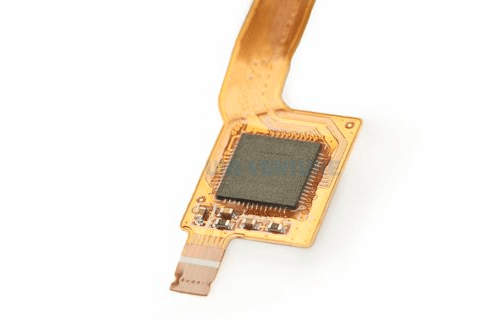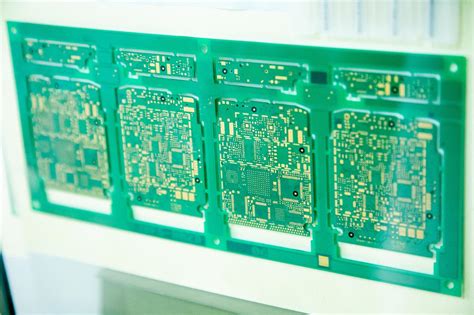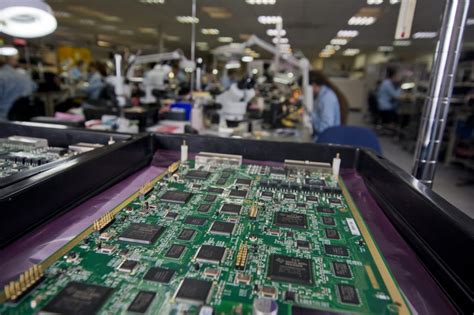Cheap rigid flex pcb
Understanding The Cost Benefits Of Cheap Rigid Flex PCB Solutions
In the ever-evolving landscape of electronics manufacturing, the demand for more efficient, compact, and versatile components has led to the increased adoption of rigid flex printed circuit boards (PCBs). These innovative solutions combine the best features of both rigid and flexible circuits, offering a unique blend of durability and adaptability. As industries strive to optimize their production processes and reduce costs, the emergence of cheap rigid flex PCB solutions has become a focal point for manufacturers seeking to balance performance with affordability.
To begin with, it is essential to understand the fundamental advantages that rigid flex PCBs offer over traditional circuit boards.
By integrating flexible and rigid sections into a single unit, these PCBs provide enhanced design flexibility, allowing for more complex and compact electronic assemblies. This integration reduces the need for connectors and cables, which not only simplifies the assembly process but also minimizes potential points of failure. Consequently, the reliability of electronic devices is significantly improved, making rigid flex PCBs an attractive option for applications where durability is paramount.
Moreover, the cost benefits of cheap rigid flex PCB solutions extend beyond the initial purchase price.
While the upfront cost of these PCBs may be higher than that of standard rigid or flexible boards, the long-term savings are substantial. For instance, the reduction in assembly time and the elimination of additional components translate into lower labor costs and decreased material expenses. Additionally, the enhanced reliability of rigid flex PCBs reduces the likelihood of costly repairs and replacements, further contributing to overall cost efficiency.
Furthermore, the miniaturization trend in electronics has amplified the need for compact and lightweight components.
Rigid flex PCBs cater to this demand by enabling the design of smaller and lighter devices without compromising on functionality. This capability is particularly beneficial in industries such as aerospace, medical devices, and consumer electronics, where space and weight constraints are critical considerations. By opting for cheap rigid flex PCB solutions, manufacturers can achieve the desired miniaturization while maintaining a competitive edge in the market.
In addition to these practical benefits, the environmental impact of rigid flex PCBs is another factor that underscores their cost-effectiveness.
The reduced need for connectors and cables not only simplifies the design but also decreases the amount of raw materials required. This reduction in material usage aligns with the growing emphasis on sustainable manufacturing practices, allowing companies to meet environmental regulations and appeal to eco-conscious consumers. Consequently, the adoption of cheap rigid flex PCB solutions can enhance a company’s reputation and marketability, further justifying the investment.
Transitioning to the challenges associated with implementing rigid flex PCBs, it is important to acknowledge that the design and manufacturing processes can be more complex than those for traditional PCBs.
However, advancements in technology and the increasing availability of specialized design software have mitigated these challenges, making it easier for manufacturers to incorporate rigid flex solutions into their production lines. By leveraging these tools and collaborating with experienced PCB suppliers, companies can overcome potential obstacles and fully capitalize on the benefits of cheap rigid flex PCBs.
In conclusion, the cost benefits of cheap rigid flex PCB solutions are multifaceted, encompassing not only direct financial savings but also improvements in reliability, miniaturization, and environmental sustainability. As industries continue to prioritize efficiency and innovation, the adoption of these versatile circuit boards is likely to accelerate, offering manufacturers a strategic advantage in an increasingly competitive market.

Top Suppliers For Affordable Rigid Flex PCBs
In the ever-evolving landscape of electronics manufacturing, rigid flex PCBs have emerged as a pivotal component, offering a unique blend of flexibility and durability. These circuit boards are increasingly sought after for their ability to integrate the benefits of both rigid and flexible circuits, making them ideal for a wide range of applications, from consumer electronics to aerospace technology. As demand grows, so does the need for cost-effective solutions. Identifying top suppliers who offer affordable rigid flex PCBs without compromising on quality is crucial for businesses aiming to maintain competitive pricing while ensuring product reliability.
One of the foremost suppliers in this domain is PCBWay, renowned for its commitment to affordability and quality.
PCBWay has established itself as a leader by leveraging advanced manufacturing techniques and economies of scale to offer competitive pricing. Their extensive experience in the PCB industry allows them to provide customized solutions that meet specific client requirements, ensuring that even budget-conscious projects can benefit from high-quality rigid flex PCBs. Moreover, PCBWay’s user-friendly online platform simplifies the ordering process, making it accessible for businesses of all sizes.
Similarly, JLCPCB is another prominent name in the field, known for its cost-effective offerings.
JLCPCB has gained a reputation for its efficient production processes and rapid turnaround times, which are critical factors for businesses operating under tight deadlines. By investing in state-of-the-art equipment and maintaining stringent quality control measures, JLCPCB ensures that their rigid flex PCBs meet international standards while remaining affordable. Their transparent pricing model, which includes no hidden fees, further enhances their appeal to cost-sensitive clients.
In addition to these suppliers, ALLPCB stands out for its innovative approach to reducing costs.
By utilizing a global network of manufacturing partners, ALLPCB can offer competitive pricing on rigid flex PCBs without sacrificing quality. This collaborative approach allows them to tap into diverse expertise and resources, resulting in a product that meets the high standards expected by today’s technology-driven market. Furthermore, ALLPCB’s commitment to customer service ensures that clients receive support throughout the entire production process, from design to delivery.
Another noteworthy supplier is Seeed Studio, which has carved a niche for itself by focusing on small to medium-sized orders.
This focus allows Seeed Studio to cater to startups and smaller enterprises that require affordable yet reliable rigid flex PCBs. By offering a range of prototyping services and flexible order quantities, Seeed Studio provides an accessible entry point for companies looking to innovate without incurring prohibitive costs. Their dedication to fostering innovation is evident in their continuous investment in research and development, ensuring that they remain at the forefront of PCB technology.
As the demand for rigid flex PCBs continues to rise, the importance of finding affordable suppliers cannot be overstated. Companies like PCBWay, JLCPCB, ALLPCB, and Seeed Studio exemplify how quality and affordability can coexist, providing businesses with the tools they need to succeed in a competitive market. By choosing the right supplier, companies can not only reduce production costs but also enhance the performance and reliability of their products, ultimately leading to greater customer satisfaction and business growth.
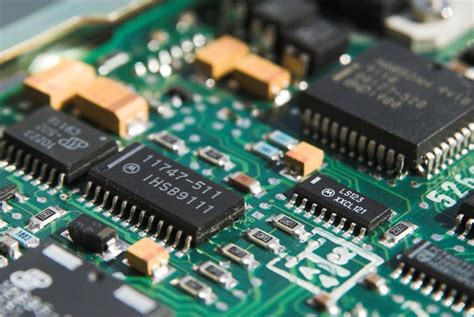
Design Tips For Cost-Effective Rigid Flex PCB Manufacturing
Designing cost-effective rigid-flex PCBs requires a strategic approach that balances functionality with budget constraints. As the demand for compact and versatile electronic devices grows, rigid-flex PCBs have become increasingly popular due to their ability to combine the benefits of both rigid and flexible circuits. However, the complexity of these boards can lead to higher manufacturing costs if not carefully managed. To achieve a cost-effective design, it is essential to consider several key factors throughout the design process.
Firstly, optimizing the layer count is crucial.
Rigid-flex PCBs can have multiple layers, but each additional layer increases the cost. Therefore, it is advisable to minimize the number of layers without compromising the board’s performance. This can be achieved by carefully planning the layout and utilizing advanced design software to simulate and validate the design before production. By doing so, designers can identify potential issues early and make necessary adjustments, thereby avoiding costly revisions later.
In addition to layer optimization, selecting the right materials is another important consideration.
The choice of materials impacts not only the cost but also the performance and reliability of the PCB. While high-performance materials may offer superior characteristics, they can significantly increase the overall cost. Therefore, it is important to evaluate the specific requirements of the application and choose materials that provide an optimal balance between cost and performance. For instance, using standard materials for non-critical layers and reserving high-performance materials for critical areas can help reduce costs.
Furthermore, simplifying the design can lead to significant cost savings.
Complex designs with intricate patterns and numerous vias can increase manufacturing time and costs. By simplifying the design, such as reducing the number of vias and avoiding unnecessary features, designers can streamline the manufacturing process and reduce expenses. Additionally, standardizing the design by using common shapes and sizes can further lower costs, as it allows manufacturers to utilize existing tooling and processes.
Another effective strategy is to collaborate closely with manufacturers during the design phase.
Manufacturers possess valuable insights into cost-effective production techniques and can provide guidance on design adjustments that can lead to savings. By involving manufacturers early in the process, designers can leverage their expertise to identify potential cost-saving opportunities and ensure that the design is optimized for manufacturability.
Moreover, considering the assembly process is essential for cost-effective rigid-flex PCB manufacturing.
Designing for ease of assembly can reduce labor costs and minimize the risk of errors. This includes ensuring that components are easily accessible and that the layout facilitates efficient assembly. Additionally, using surface-mount technology (SMT) instead of through-hole components can further reduce assembly costs, as SMT is generally faster and more cost-effective.
Finally, conducting thorough testing and validation is vital to avoid costly rework and ensure the reliability of the final product.
By implementing rigorous testing protocols and validating the design through simulations and prototypes, designers can identify and address potential issues before full-scale production. This proactive approach not only reduces the risk of defects but also minimizes the likelihood of expensive post-production modifications.
In conclusion, designing cost-effective rigid-flex PCBs requires a comprehensive approach that considers various factors, from layer optimization and material selection to design simplification and collaboration with manufacturers. By strategically addressing these elements, designers can achieve a balance between performance and cost, ultimately leading to successful and economical rigid-flex PCB manufacturing.
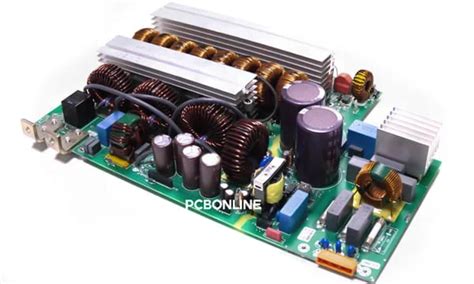
Comparing Cheap Rigid Flex PCBs: Quality Vs. Price
In the ever-evolving landscape of electronics manufacturing, the demand for versatile and efficient circuit solutions has led to the increased popularity of rigid flex PCBs. These innovative circuit boards combine the best features of rigid and flexible PCBs, offering enhanced durability and design flexibility. However, as with any technological advancement, the cost of production can be a significant concern for manufacturers and consumers alike. This has given rise to a market for cheap rigid flex PCBs, prompting a critical examination of the balance between quality and price.
To begin with, it is essential to understand the fundamental characteristics that define rigid flex PCBs.
These circuit boards are composed of multiple layers of flexible circuit substrates attached to one or more rigid boards. This unique construction allows for three-dimensional configurations, which can be particularly advantageous in compact electronic devices where space is at a premium. The ability to bend and fold without compromising electrical performance makes rigid flex PCBs an attractive option for a wide range of applications, from consumer electronics to aerospace technology.
However, the production of rigid flex PCBs is inherently more complex than that of traditional rigid or flexible PCBs.
This complexity arises from the need to carefully manage the integration of rigid and flexible materials, ensuring reliable electrical connections and mechanical stability. Consequently, the manufacturing process requires specialized equipment and expertise, which can drive up costs. In response to this challenge, some manufacturers have sought to produce cheaper alternatives, often by streamlining production processes or using lower-cost materials.
While the allure of reduced costs is undeniable, it is crucial to consider the potential trade-offs in quality when opting for cheap rigid flex PCBs.
One of the primary concerns is the reliability of the electrical connections between the rigid and flexible sections. Inexpensive materials or suboptimal manufacturing techniques can lead to issues such as delamination, poor signal integrity, or even complete circuit failure. These problems can be particularly detrimental in applications where reliability is paramount, such as in medical devices or automotive systems.
Moreover, the use of lower-quality materials can impact the overall durability and lifespan of the PCB.
For instance, cheaper substrates may not withstand repeated bending or exposure to harsh environmental conditions, leading to premature wear and tear. This can result in increased maintenance costs or the need for more frequent replacements, ultimately negating the initial savings achieved by opting for a cheaper product.
On the other hand, it is worth noting that not all affordable rigid flex PCBs are inherently inferior.
Some manufacturers have successfully implemented cost-effective production techniques without compromising on quality. For example, advancements in automated manufacturing processes and economies of scale have enabled certain companies to offer competitively priced products that still meet industry standards. Therefore, it is imperative for consumers to conduct thorough research and due diligence when selecting a supplier, considering factors such as the manufacturer’s reputation, quality control measures, and customer reviews.
In conclusion, while the prospect of cheap rigid flex PCBs is appealing, it is essential to weigh the potential cost savings against the risks of reduced quality and reliability. By carefully evaluating the trade-offs and selecting reputable manufacturers, consumers can make informed decisions that align with their specific needs and priorities. As the technology continues to advance, it is likely that the gap between quality and price will narrow, offering even greater opportunities for innovation and efficiency in the electronics industry.





